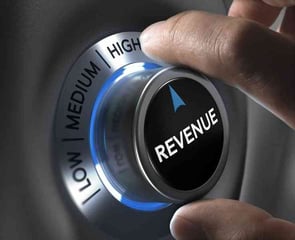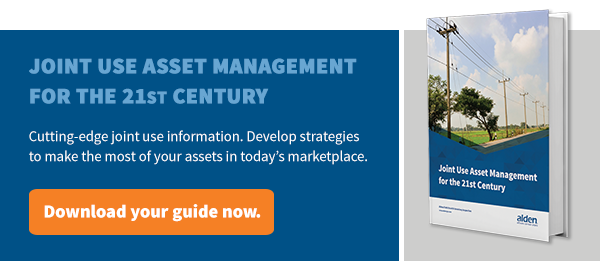Winning Strategies (Part 2): How Pole Owners Can Generate Revenue
 This post is the second in a two-part blog series that explores the potential for joint use field assets to become revenue-generating businesses. Part 1 looks at the first two strategies that include capturing and marketing available space and centralizing people and processes to gain efficiencies.
This post is the second in a two-part blog series that explores the potential for joint use field assets to become revenue-generating businesses. Part 1 looks at the first two strategies that include capturing and marketing available space and centralizing people and processes to gain efficiencies.
Maximizing the potential return on joint use infrastructure assets requires a combination of strategies that span operations, legal, engineering and finance. Increases in joint use revenue can be used to fund asset maintenance—including upgrades and replacements of aging plant assets—and support asset owners' product offerings.
Winning Strategies: 6 Tips to Maximize Return
By looking to outside industries and companies that never existed as regulated entities, we can gather insight into how to position an asset as a revenue generator. From this perspective, we have identified the following strategies for joint use asset owners.
1. Contract Negotiations & Renewals
Joint use contracts should not automatically renew. Automatic renewals result in the decade-old contracts that we find still in use today. A defined renewal period provides both parties the opportunity to regularly review the terms and conditions and revise them as needed.
While annual renewal periods are ideal, this may not be realistic for all asset owners. Renewal periods of two to three years are common terms; however, when a contract is more than four years old, it should be considered out of date.
2. Manage Risk and Liability
Technicians often pass by problems in the field, potentially multiple times. This creates exposure for the joint use owner. To better manage risk and liability, technicians can be equipped with smartphone access to a software system to initiate a resolution workflow in the field.
3. Timely Pole Transfers
Joint use asset owners should implement a timely and effective process for foreign pole transfers. This process will help joint asset owners avoid assuming ownership of poor assets, such as double wood due to a deteriorated pole replacement.
4. Inspection Coordination
To maximize the effectiveness of an inspection effort, field asset owners need the ability to coordinate all parties (power, telecommunications, CATV, etc.) for inspections and corrections.
5. Coordinate Structural Testing
Regular structural testing that examines assets for pole rot, conduit collapse and tower integrity will ensure continued performance and prevent safety hazards, unexpected downtime and repairs.
6. Data Responsibility
Centralizing all joint use data within a single system, that can also be connected to attachers and other parties, can help ensure data accuracy and consistency. This should include:
- Field data (poles, conduit, towers, etc.)
- Reconciliation with foreign owners and attachers
- Project coordination for joint use and other field activities
Are your jointly-owned field assets generating revenues for your business? If not, it may be time to rethink how your joint assets function in support of your other business offerings.
The joint use industry is entering a new era of modernization. Learn strategies for positioning your joint use business for future success by downloading our new eBook, Joint Use Asset Management for the 21st Century.
